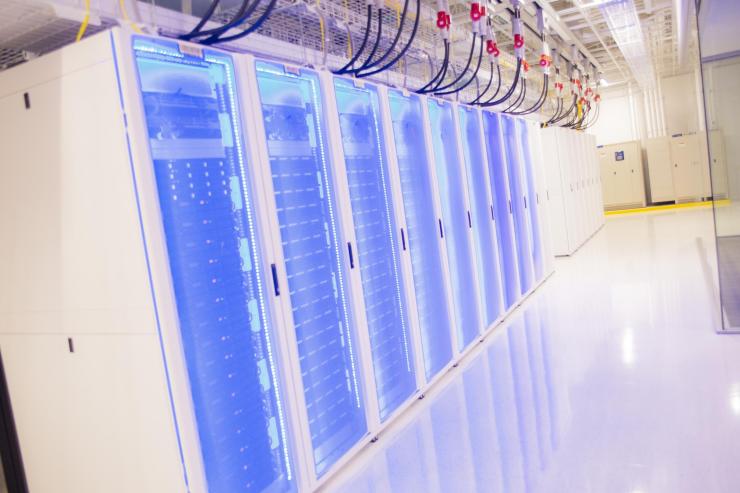Georgia Tech now boasts a $5.3 million high-performance computing (HPC) system that is enabling data-driven discovery in data science, computational astrophysics, biology, chemistry, and materials science at the institute.
Known as Hive, this newly operational supercomputer supports research for over 33 faculty, 54 research scientists and postdocs, 195 graduate students, and 56 undergraduate students from the colleges of Computing, Engineering, and Sciences.
Hive was acquired by the Institute for Data Engineering and Science (IDEaS) through a $3.7 million National Science Foundation (NSF) Major Research and Instrumentation Program grant and a $1.6 million contribution by Georgia Tech in 2018.
[Related News: Georgia Tech Award Equips Coda’s Data Center with New Supercomputer]
IDEaS Director and School of Computational Science and Engineering (CSE) Professor and Interim Chair Srinivas Aluru is the primary investigator on the grant. According to Aluru, “Hive allows us to solve large scale of data-intensive problems and will be an asset to Georgia Tech for the next five years or so.”
The supercomputer has over 100 trillion bytes of memory, 11,500 compute cores, and 2.5 quadrillion bytes of storage. To put it simply, this cluster, which delivers 0.7 petaflops of performance based on the LINPACK Benchmark, is fast.
[VIDEO::https://youtu.be/ZHV8fxzhlDw::aVideoStyle]
Local and National Collaborations
Hive represents several interdisciplinary, cross-institute collaborative efforts. One of these is the attachment of this supercomputer to the Extreme Science and Engineering Discovery Environment (XSEDE) program, which funds and interconnects supercomputers nationwide, enabling national collaborative use of this resource.
“We have reserved about 20 percent capacity of the machine to support research activities of regional partners, minority-serving institutions, and others through the XSEDE Program,” Aluru said.
“One particular segment that we are focusing on is supporting historically black colleges and universities (HBCUs) and minority institutions in or around Atlanta. We are also providing active training programs to bring faculty and students from these institutions on board to use high-performance computing,” he said.
Currently, Morehouse College, Spelman College, and Clark Atlanta University all have research on the machine with the support of this program.
Georgia Tech’s HPC Future
Hive made its official debut with a ribbon-cutting ceremony on Oct. 21 at the Coda datacenter. Georgia Tech Executive Vice President of Research Chouki Abdallah delivered opening remarks before attendees were invited for a private tour of the new facility and an up-close view of the Hive computer – which featured newly-added blue LED lights across its many stacks.
“The institute is trying to come up with a long-term plan for high-performance computing, and this is a manifestation of our performance so far,” said Abdallah during the ceremony.
Part of this plan includes moving all of Georgia Tech’s computing services and the Office of Information Technology to the new data center by the end of the school year.
Six Years in the Making
Hive’s existence represents roughly six years of planning and preparation across Georgia Tech units and several external organizations. This includes the construction of an entirely new 80,000 sq. ft. data center in the Coda building which is managed by DataBank.
Integral to this datacenter planning and readying for the Hive supercomputer was Georgia Tech’s Partnership for an Advanced Computing Environment (PACE) team.
According to PACE Senior HPC Architect Paul Manno, “We have partnered with DataBank and we are working with them to create what is essentially a great research resource, but also a great operations datacenter, for Georgia Tech and others. Before, we were limited by space, power, and cooling in the old datacenter on campus.”
He said, “Now, in addition to having much more space, we are starting out with roughly two megawatts of power for Georgia Tech and we can expand that up to 8-10 megawatts, which gives us the ability to expand well beyond what people had originally envisioned and provides Georgia Tech a means to grow into the future.”

